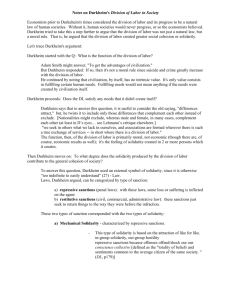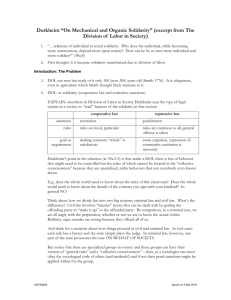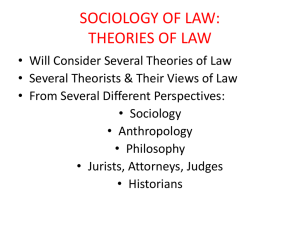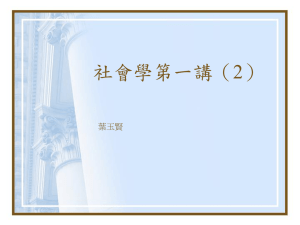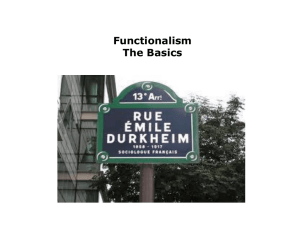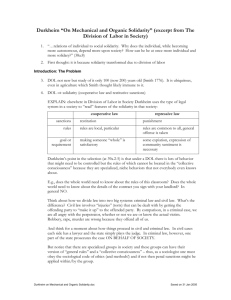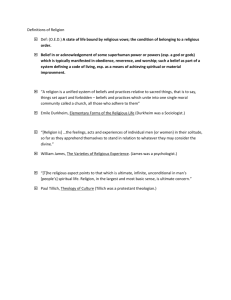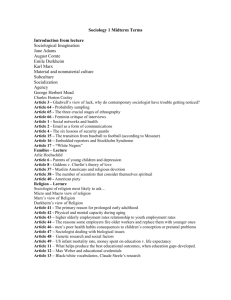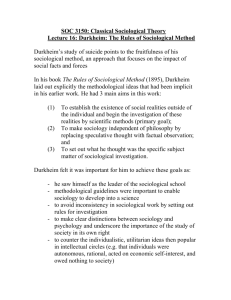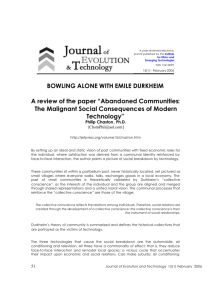durkheim on division of labor and his problems with women
advertisement
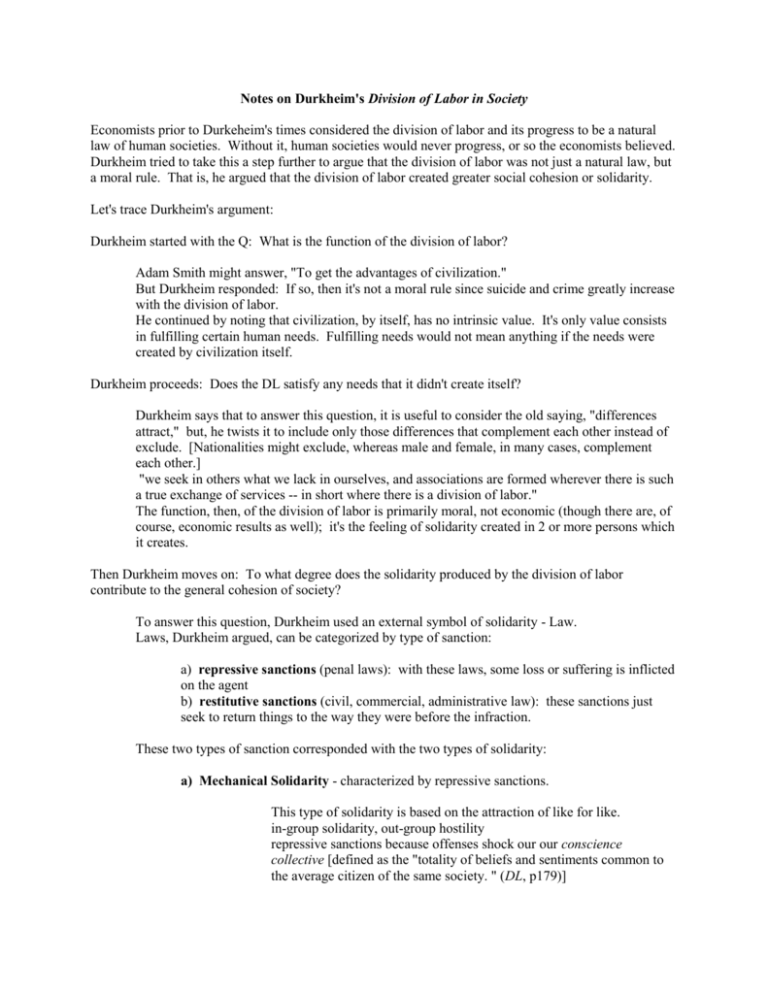
Notes on Durkheim's Division of Labor in Society Economists prior to Durkeheim's times considered the division of labor and its progress to be a natural law of human societies. Without it, human societies would never progress, or so the economists believed. Durkheim tried to take this a step further to argue that the division of labor was not just a natural law, but a moral rule. That is, he argued that the division of labor created greater social cohesion or solidarity. Let's trace Durkheim's argument: Durkheim started with the Q: What is the function of the division of labor? Adam Smith might answer, "To get the advantages of civilization." But Durkheim responded: If so, then it's not a moral rule since suicide and crime greatly increase with the division of labor. He continued by noting that civilization, by itself, has no intrinsic value. It's only value consists in fulfilling certain human needs. Fulfilling needs would not mean anything if the needs were created by civilization itself. Durkheim proceeds: Does the DL satisfy any needs that it didn't create itself? Durkheim says that to answer this question, it is useful to consider the old saying, "differences attract," but, he twists it to include only those differences that complement each other instead of exclude. [Nationalities might exclude, whereas male and female, in many cases, complement each other.] "we seek in others what we lack in ourselves, and associations are formed wherever there is such a true exchange of services -- in short where there is a division of labor." The function, then, of the division of labor is primarily moral, not economic (though there are, of course, economic results as well); it's the feeling of solidarity created in 2 or more persons which it creates. Then Durkheim moves on: To what degree does the solidarity produced by the division of labor contribute to the general cohesion of society? To answer this question, Durkheim used an external symbol of solidarity - Law. Laws, Durkheim argued, can be categorized by type of sanction: a) repressive sanctions (penal laws): with these laws, some loss or suffering is inflicted on the agent b) restitutive sanctions (civil, commercial, administrative law): these sanctions just seek to return things to the way they were before the infraction. These two types of sanction corresponded with the two types of solidarity: a) Mechanical Solidarity - characterized by repressive sanctions. This type of solidarity is based on the attraction of like for like. in-group solidarity, out-group hostility repressive sanctions because offenses shock our our conscience collective [defined as the "totality of beliefs and sentiments common to the average citizen of the same society. " (DL, p179)] We react aggressively against those ideas and sentiments which contradict our own. This links th eindividual to the social order - by virtue of his or her resemblance to others. b) Organic Solidarity - characterized by laws with restitutive sanctions Laws with restitutive sanctions must not have a strong source in the collective conscience. Instead, they have a source in the division of labor. Presumes the differences of individuals - there has to be a sphere of action peculiar to the individual for these sanctions to exist [selfinterest]. That is, the conscience collective must leave part of the individual conscience untouched. The more the individual conscience is expanded, the greater the cohesion produced from this kind of solidarity. For any particular society, then, the ratio of laws with repressive sanctions to those with restitutive sanctions should be the same as the conscience collective to the division of labor. More "civilized" societies, Durkheim found, did, in fact, have fewer repressive sanctions - except for those types of repressive sanctions that protect the individual. Thus, the individual becomes the new religion - the last remaining piece of the collective conscience is the sanctity of the individual. Changes in structural features of societies: The horde: This structure was seen in mechanical societies and is characterized by a homogeneous mass of indistinguishable parts. This structure was never seen in reality, but the clan had been. This was when the horde became a part of a more extensive group - basically, a number of hordes interacting with each other. The clan also was internally homogeneous and based on resemblances, not differences. Organized type: This structure was seen in organic societies. It was coordinated around a central organ [regulative action. Individuals place in this structure was determined by occupation instead of kin-group. This structure also was not anywhere observable in its true form. Causes of the Division of Labor: - not the desire for happiness [Durkheim wanted it to be sociological, not psychological]. Are we happier than those in more mechanical societies? - Instead it was due to an increase in dynamic or moral density: a) smaller geographic distance b/w members of a society b) smaller technological distance b/w members of a society c) sheer social volume of a society. These factors make the struggle for existence more acute. The only way to survive, Durkheim might argue, is differentiation/specialization - > then we each need different resources. Durkheim also discussed Pathological or Abnormal forms of the division of labor (Anomic and forced). These however, will be more easily discussed based on his next work - Suicide.
